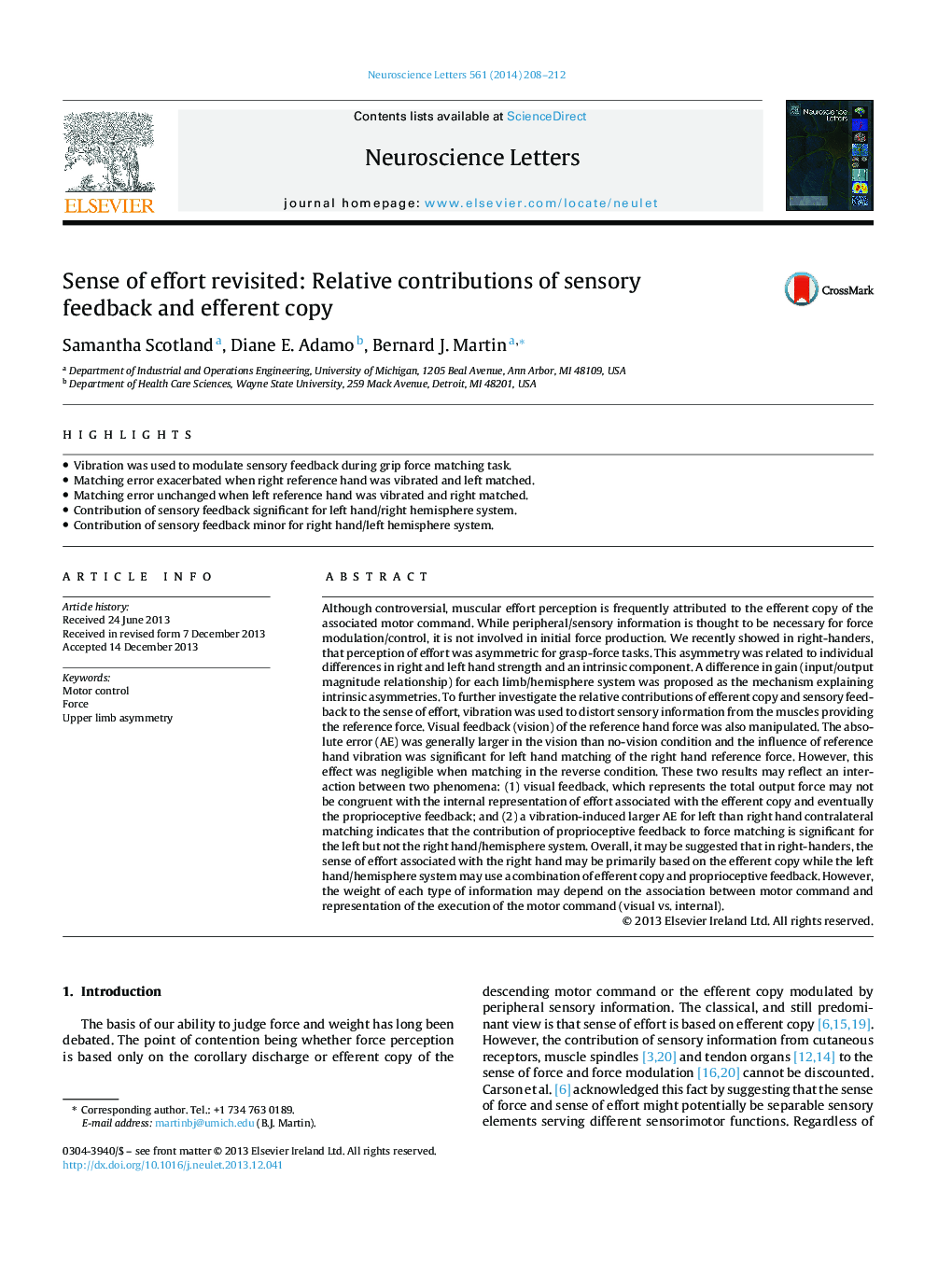| کد مقاله | کد نشریه | سال انتشار | مقاله انگلیسی | نسخه تمام متن |
|---|---|---|---|---|
| 4343876 | 1615138 | 2014 | 5 صفحه PDF | دانلود رایگان |
• Vibration was used to modulate sensory feedback during grip force matching task.
• Matching error exacerbated when right reference hand was vibrated and left matched.
• Matching error unchanged when left reference hand was vibrated and right matched.
• Contribution of sensory feedback significant for left hand/right hemisphere system.
• Contribution of sensory feedback minor for right hand/left hemisphere system.
Although controversial, muscular effort perception is frequently attributed to the efferent copy of the associated motor command. While peripheral/sensory information is thought to be necessary for force modulation/control, it is not involved in initial force production. We recently showed in right-handers, that perception of effort was asymmetric for grasp-force tasks. This asymmetry was related to individual differences in right and left hand strength and an intrinsic component. A difference in gain (input/output magnitude relationship) for each limb/hemisphere system was proposed as the mechanism explaining intrinsic asymmetries. To further investigate the relative contributions of efferent copy and sensory feedback to the sense of effort, vibration was used to distort sensory information from the muscles providing the reference force. Visual feedback (vision) of the reference hand force was also manipulated. The absolute error (AE) was generally larger in the vision than no-vision condition and the influence of reference hand vibration was significant for left hand matching of the right hand reference force. However, this effect was negligible when matching in the reverse condition. These two results may reflect an interaction between two phenomena: (1) visual feedback, which represents the total output force may not be congruent with the internal representation of effort associated with the efferent copy and eventually the proprioceptive feedback; and (2) a vibration-induced larger AE for left than right hand contralateral matching indicates that the contribution of proprioceptive feedback to force matching is significant for the left but not the right hand/hemisphere system. Overall, it may be suggested that in right-handers, the sense of effort associated with the right hand may be primarily based on the efferent copy while the left hand/hemisphere system may use a combination of efferent copy and proprioceptive feedback. However, the weight of each type of information may depend on the association between motor command and representation of the execution of the motor command (visual vs. internal).
Journal: Neuroscience Letters - Volume 561, 21 February 2014, Pages 208–212
